quad strain rehab exercises pdf
Summary
Recover faster with our expert-led quad strain rehab exercises PDF. Get step-by-step guides and proven techniques for a full recovery.
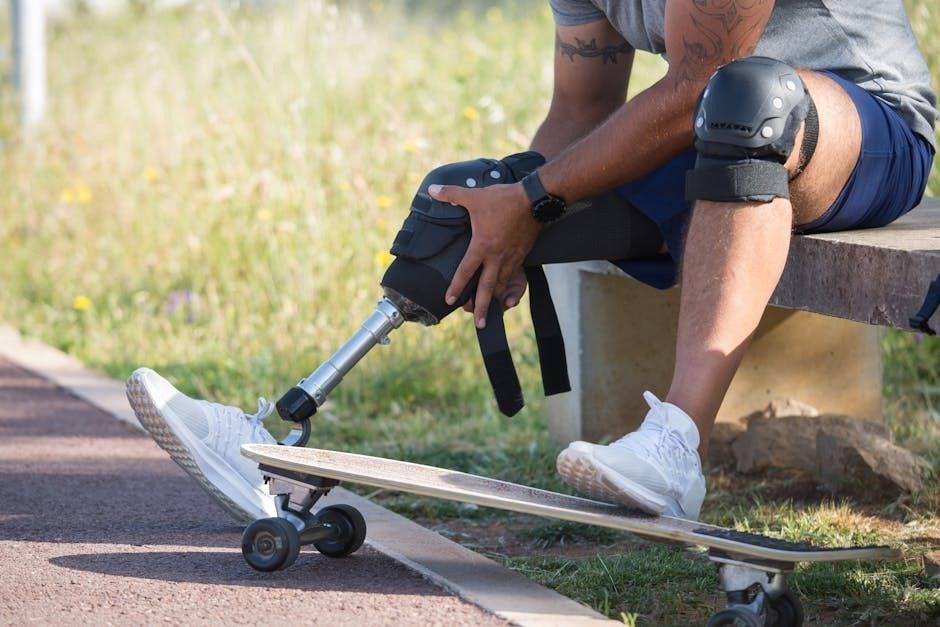
Understanding Quad Strain and Its Impact on Rehabilitation
A quad strain is a common injury affecting the quadriceps muscles, often caused by overstretching or sudden contractions. It significantly impacts mobility, strength, and daily activities. Proper rehabilitation is crucial to restore function, prevent chronic issues, and ensure a safe return to sports or normal life. Early intervention and structured exercises are key to achieving a full recovery and avoiding future injuries.
Defining Quad Strain and Its Severity Levels
A quad strain occurs when one or more of the quadriceps muscles (rectus femoris, vastus lateralis, vastus medialis, or vastus intermedius) are overstretched or torn. It is classified into three severity levels: Grade 1 (mild strain with microscopic tears), Grade 2 (moderate strain with partial tearing), and Grade 3 (severe strain with complete rupture of the muscle). Symptoms vary from mild pain and stiffness to significant weakness and inability to perform daily activities. Accurate diagnosis and understanding of the severity are crucial for effective rehabilitation.
The Importance of Early Rehabilitation
Early rehabilitation is vital for recovery from a quad strain. Prompt intervention prevents muscle atrophy, reduces scar tissue formation, and restores strength and flexibility. Delaying rehab can lead to prolonged recovery, chronic weakness, and increased risk of re-injury. Even in severe cases, starting rehab within 48 hours post-injury promotes healing and minimizes complications. A structured program ensures gradual progression, avoiding overexertion and fostering a safer return to normal activities or sports.
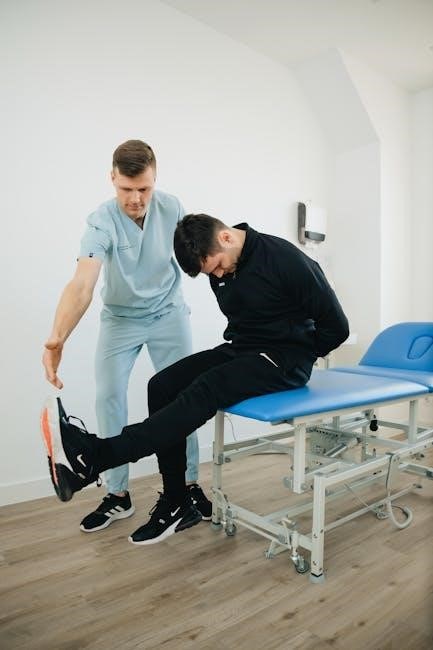
Acute Phase Rehabilitation (24-48 Hours)
Focus on pain management and inflammation reduction using RICE (Rest, Ice, Compression, Elevation). Gentle exercises like ankle pumps and heel slides aid recovery without overexertion, promoting blood flow and maintaining mobility during the healing process.

Rest and Ice Therapy
Rest and ice therapy are critical during the acute phase of quad strain rehabilitation. The RICE method (Rest, Ice, Compression, Elevation) helps reduce inflammation and pain. Apply ice for 15-20 minutes every 1-2 hours to minimize swelling. Avoid activities that strain the muscle, and use compression bandages or wraps to support the area. Elevate the leg above heart level to reduce fluid accumulation. This phase ensures the muscle begins healing without further damage, setting the foundation for progressive recovery and strengthening exercises.
Gentle Stretching and Mobility Exercises
Gentle stretching and mobility exercises are essential during the early stages of quad strain rehab. Focus on low-intensity movements to improve flexibility without causing pain. Standing hamstring stretches, calf stretches, and heel slides are effective. These exercises promote blood flow and maintain range of motion. Perform stretches 2-3 times daily, holding each for 20-30 seconds. Avoid bouncing or forced movements, as they may worsen the injury. Gradual progression ensures the muscle heals properly, preparing it for more intense exercises in later phases.
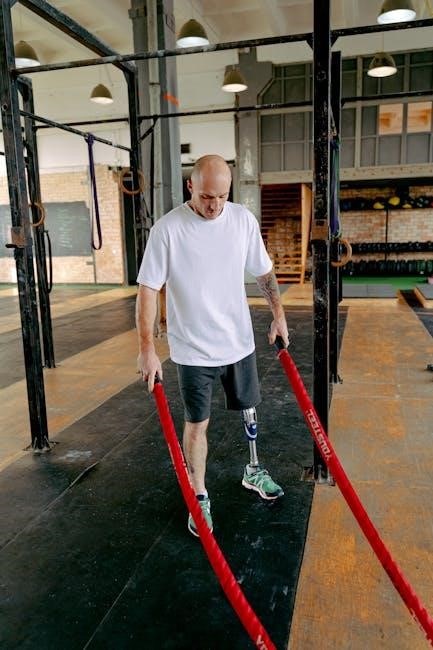
Phase I Rehab Exercises (Pain-Free Movements)
Phase I focuses on pain-free movements to restore basic strength and mobility. Exercises like quad sets and straight leg raises are performed without resistance to avoid strain.
Quad Sets and Straight Leg Raises
Quad sets are foundational exercises that involve contracting the quadriceps muscles without moving the leg. Sit or lie down, tighten the thigh muscles, and hold for 5-10 seconds. Repeat 10-15 times. Straight leg raises strengthen the quadriceps and hip flexors. Lie on your back, lift one leg straight up while keeping the knee straight, and slowly lower it. Perform 3 sets of 10-15 repetitions on each leg. These exercises promote muscle activation and strength without putting excessive strain on the injured area. They are essential for rebuilding stability and function in the early stages of recovery.
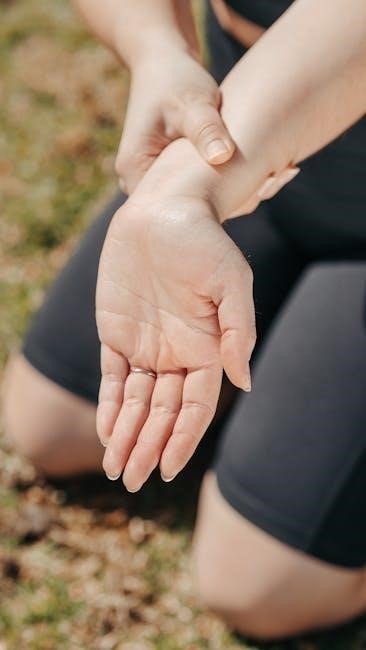
Heel Slides and Ankle Pumps
Heel slides and ankle pumps are gentle exercises to improve knee and ankle mobility. Lie on your back, bend the injured knee, and slide your heel toward your buttocks, then straighten it again. For ankle pumps, flex and point the foot slowly, repeating 10-15 times. These exercises enhance blood flow, reduce stiffness, and promote early-stage healing. Perform them 2-3 times daily to gradually restore range of motion and strengthen the lower limb without putting excessive strain on the quadriceps.
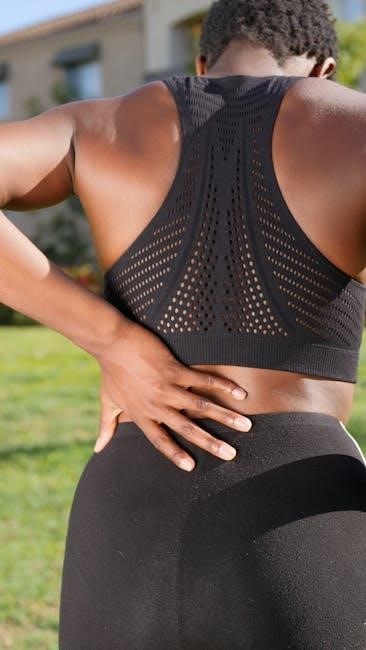
Phase II Rehab Exercises (Progressive Strengthening)
This phase introduces resistance bands and bodyweight exercises to gradually build strength; Focus on controlled movements to avoid re-injury while progressing toward more intense workouts.
Resistance Band Exercises
Resistance bands are effective for progressive strengthening in Phase II rehab. Start with light resistance and focus on proper form. Seated leg presses and standing leg extensions are popular choices. These exercises target the quadriceps while minimizing strain on the knee. Perform 3 sets of 12-15 reps, gradually increasing resistance as strength improves. Ensure controlled movements to avoid overexertion. Bands provide consistent tension, promoting balanced muscle activation and supporting the recovery process effectively.
Bodyweight Strengthening (Squats and Lunges)
Bodyweight exercises like squats and lunges are essential for Phase II rehab, targeting the quadriceps without heavy equipment. Squats work the entire lower body, while lunges focus on individual leg strength. Start with partial ranges to avoid pain and progress as strength returns. Perform 3 sets of 10-12 reps, ensuring controlled movements. These exercises improve functional strength and prepare the muscle for more dynamic activities. Avoid sacrificing form for depth to prevent reinjury and promote proper healing.
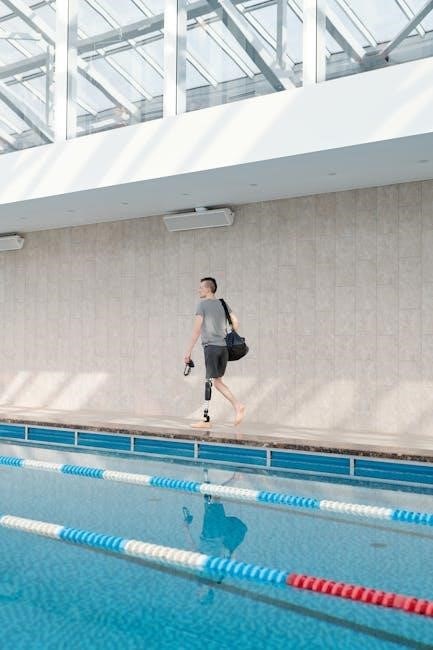
Phase III Rehab Exercises (Advanced Strengthening)
Phase III focuses on advanced strengthening with dynamic stretches and plyometrics to restore explosive power and functional movement. These exercises prepare the muscle for high-demand activities and sports.
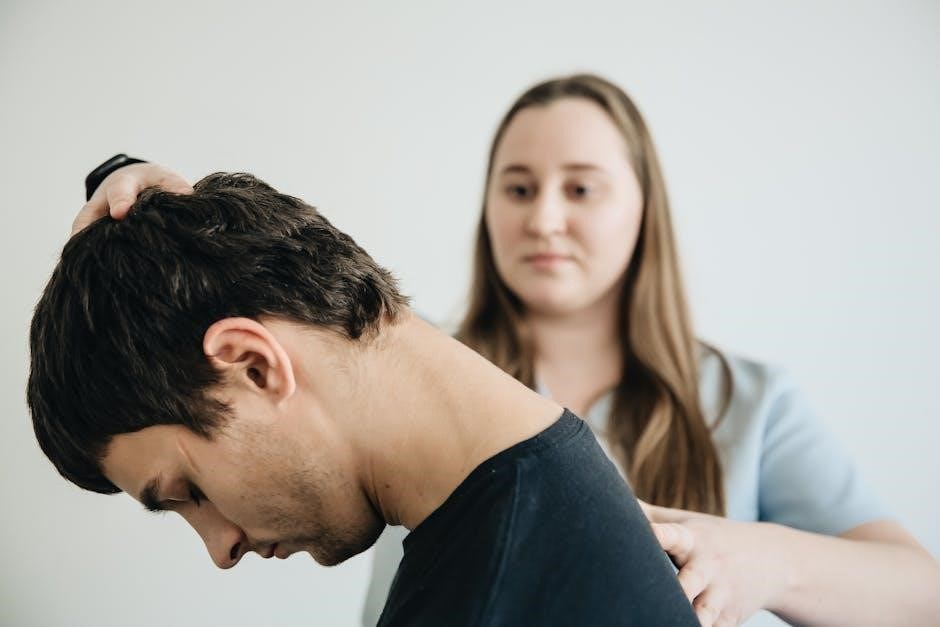
Ddynamic Stretching and Plyometrics
Dynamic Stretching and Plyometrics
Dynamic stretching involves active movements that mimic sports-specific actions, enhancing flexibility and muscle activation. Examples include high knees, butt kicks, and leg swings. Plyometrics, such as box jumps and depth jumps, focus on explosive power and retraining rapid muscle contractions. These exercises are introduced in Phase III to restore functional strength and prepare the quadriceps for dynamic movements. They improve neuromuscular coordination and reduce the risk of re-injury. Perform these exercises with controlled movements and gradually increase intensity under professional guidance to avoid overexertion.
Balance and Proprioception Training
Balance and proprioception exercises are essential for restoring stability and muscle awareness after a quad strain. Activities like single-leg stands, wobble board exercises, and balance pads challenge the injured leg to improve stability. These exercises enhance neuromuscular control, reducing the risk of re-injury; Start with eyes open and progress to eyes closed to increase difficulty. Proper proprioception helps the quadriceps function efficiently during dynamic movements, ensuring a safer return to sports or daily activities. Gradual progression is key to rebuilding confidence and strength in the affected leg.
Common Mistakes in Quad Strain Rehabilitation
Overexertion and ignoring pain are common mistakes, leading to prolonged recovery. Rushing through exercises or skipping phase I and II can cause reinjury or weaken the muscle further.
Overexertion and Ignoring Pain
Overexertion is a major mistake in quad strain rehabilitation, as it can worsen the injury and prolong recovery. Ignoring pain signals may lead to further damage or incomplete healing. Many individuals rush through exercises, believing more intensity yields faster results, but this often backfires. It’s crucial to balance activity with rest and use pain as a guide. Pushing through severe discomfort can delay progress and weaken the muscle further, making it more susceptible to future injuries. Always prioritize gradual, controlled movements to ensure proper healing and strength restoration.
Skipping Phase I and II Exercises
Skippping Phase I and II Exercises
Skippping the initial phases of rehabilitation is a common mistake that can hinder recovery. Phase I and II exercises are designed to build a foundation of strength and flexibility, which are essential for proper healing. Rushing into advanced exercises without completing these phases can lead to incomplete recovery, persistent weakness, or even reinjury. Many individuals underestimate the importance of gradual progression, but skipping these steps often results in prolonged recovery times and increased susceptibility to future strains. Consistency in early-phase exercises ensures a stronger and more stable return to activity. Neglecting them can have long-term consequences.
Preventing Future Quad Strains
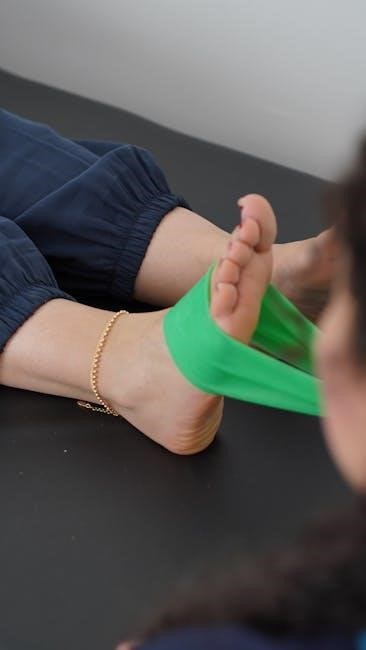
Preventing future quad strains involves strengthening surrounding muscles, improving flexibility, and incorporating proper warm-up routines. Regular stretching, core exercises, and balanced training reduce injury risk and promote long-term stability. Consistency in these practices ensures robust muscle health and durability.
Strengthening Surrounding Muscles
Strengthening the muscles around the quadriceps, such as the hamstrings, hip flexors, and core, is essential for preventing future quad strains. Weakness in these areas can lead to overcompensation, increasing the risk of injury. Incorporating exercises like lunges, leg presses, and hip thrusts can enhance overall lower limb stability. Additionally, focusing on functional movements and balance training helps distribute workload evenly, reducing strain on the quadriceps. A well-rounded strength program not only prevents injuries but also improves athletic performance and everyday mobility.
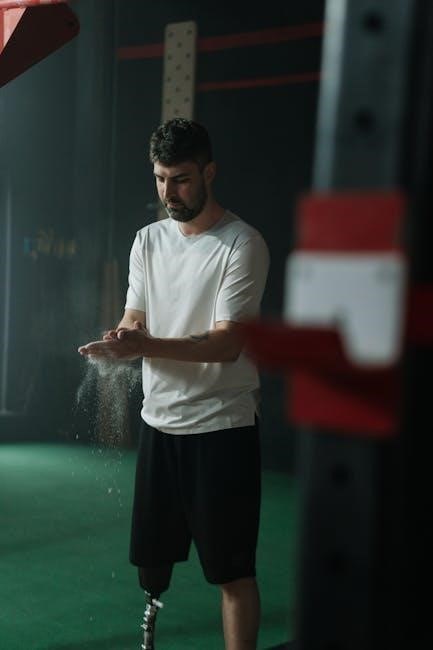
Proper Warm-Up and Cool-Down Routines
Proper warm-up and cool-down routines are vital for preventing quad strains and ensuring safe returns to activity. Start with dynamic stretches, such as leg swings and high knees, to increase blood flow and flexibility. Include light cardio, like jogging or cycling, to prepare muscles for exertion. After activity, static stretches, such as quadriceps and hamstring stretches, help reduce muscle tension. Foam rolling and gentle mobility exercises can also aid in recovery, reducing muscle soreness and improving long-term flexibility. Consistent warm-up and cool-down practices significantly lower injury risk and enhance overall performance.